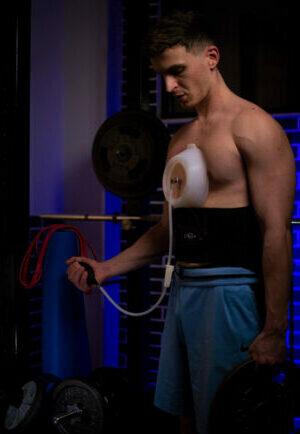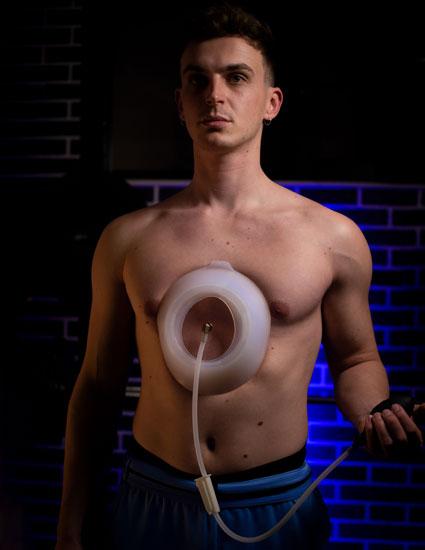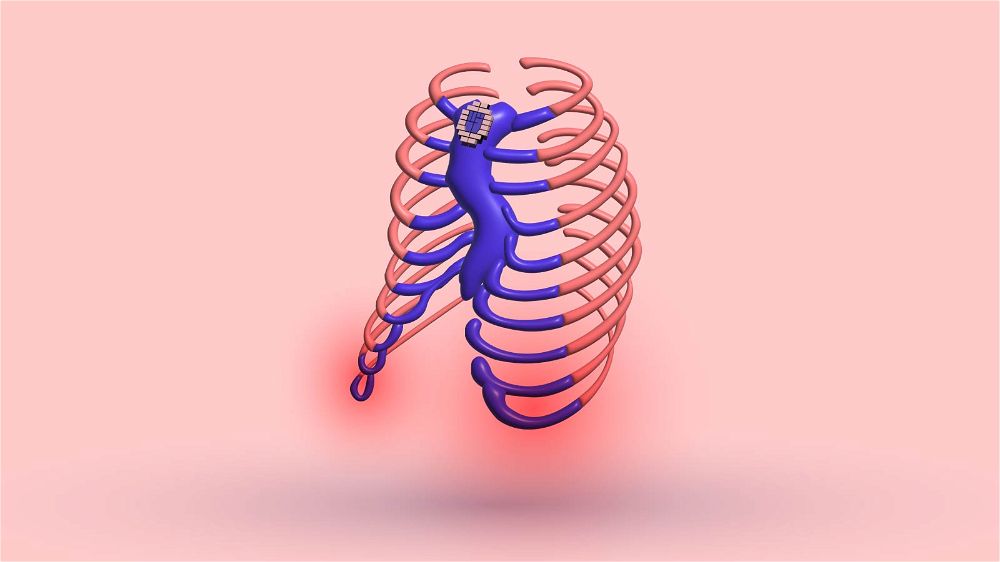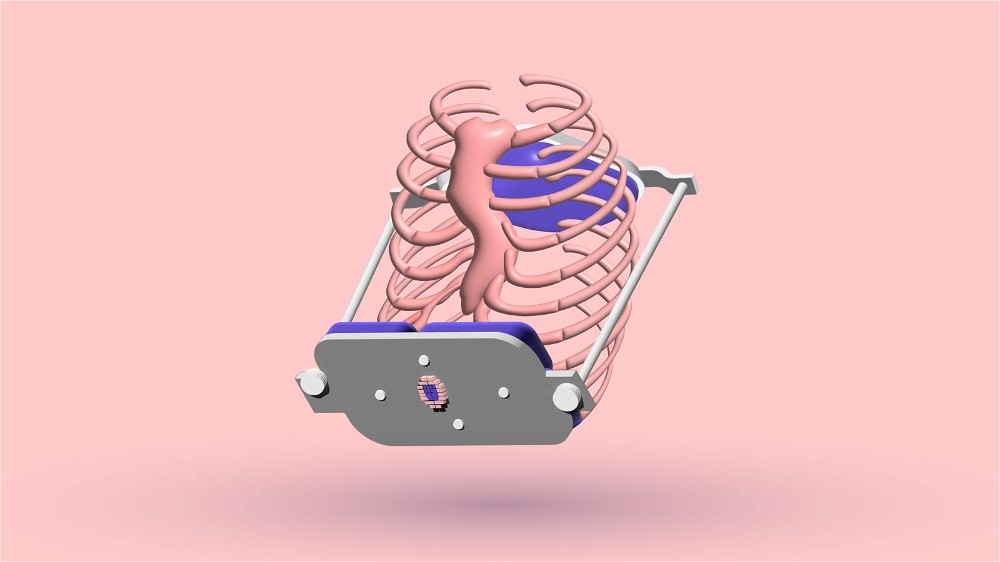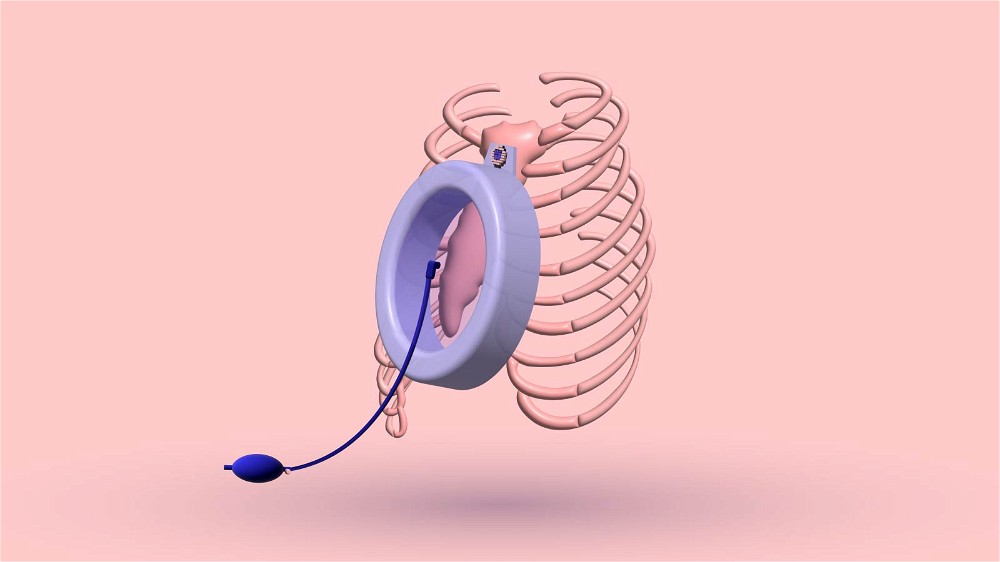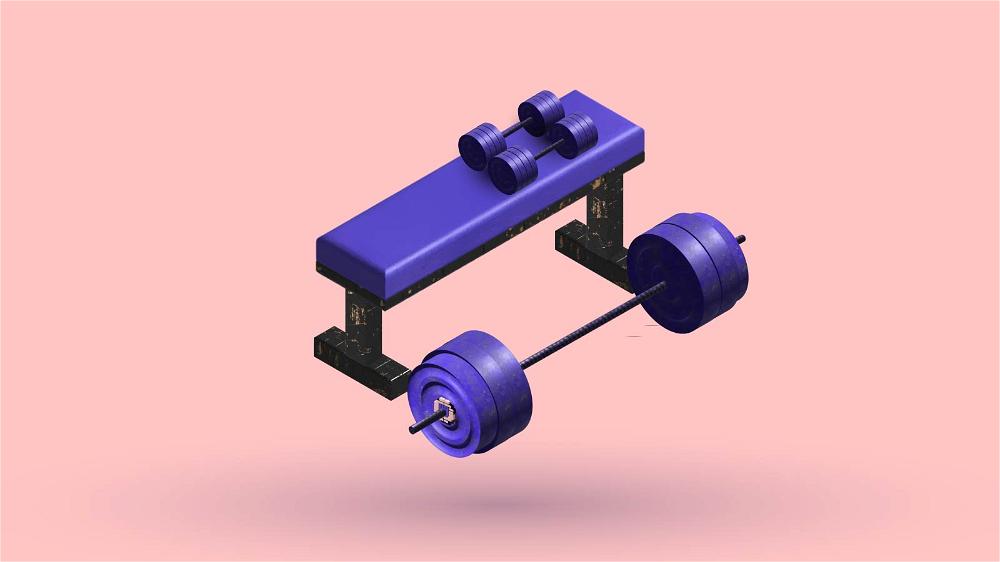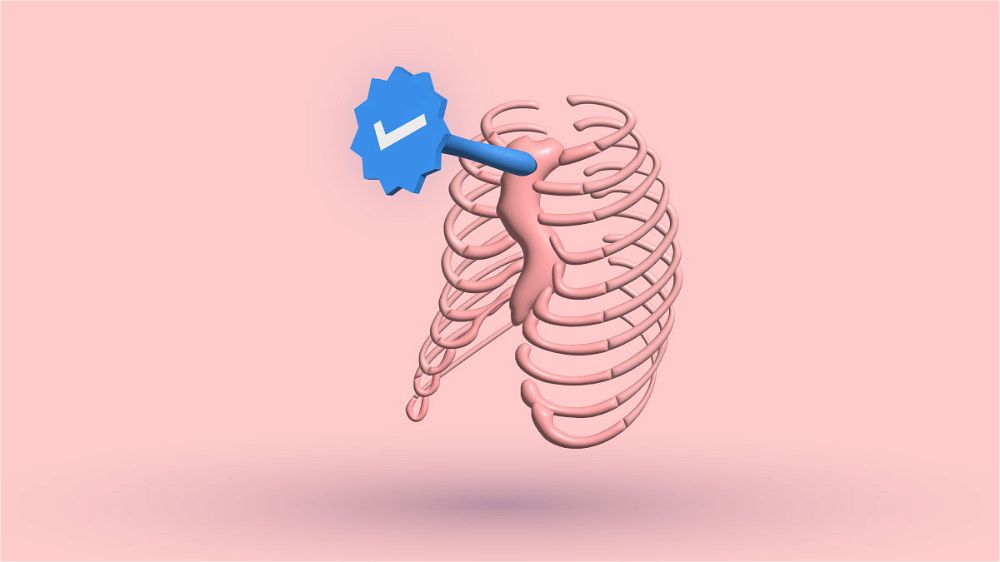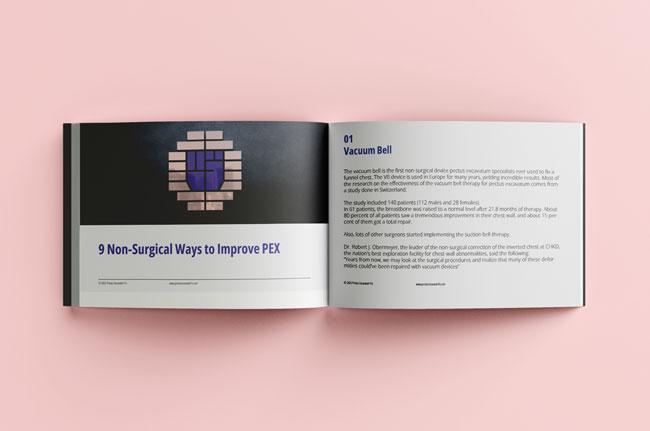Pilates is a great way to treat flared ribs and improve pectus excavatum by strengthening the core and chest muscles.
Most people know Pilates as a workout that only strengthens the abs. However, it doesn’t only target the abdominal muscles.
It is a full-body workout that will strengthen and tone every single muscle.
INTRODUCTION
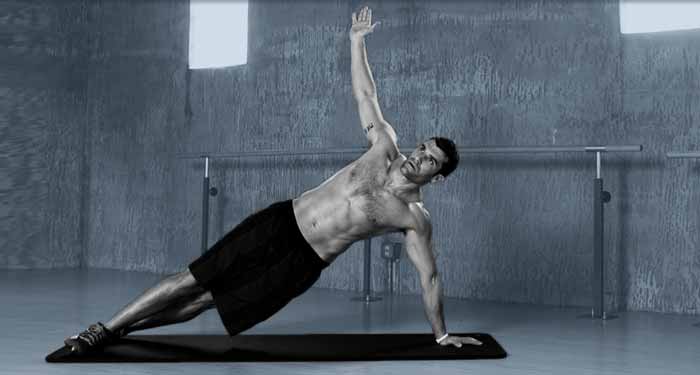
It was established in the 20th century by Joseph Pilates. As of this writing, more than 14 million people globally practice this workout system.
In 2020, there were around 16000 instructors based in the United States alone. It has a lot of additional health benefits, like improving mental function and easing chronic pain.
GREAT FOR CHRONIC PAIN
Pilates exercises for chronic pain work by improving the central muscular support system of the body to offload the joints and essential structures of the body, which reduces pain.
Pilates is excellent for chronic pain sufferers because the workouts are low impact, improve muscle strength, and can be adjusted to match your physical level.
Your thoughts will move away from focusing on painful areas when concentrating on the body as a whole.
WHAT YOU NEED TO START
All you need to perform Pilates sessions is a comfortable gym mat and two two-pound dumbbells.
Some of the best athletes in the world are huge fans of Pilates. This physical fitness system is done by people of all ages, ranging from pro athletes to grandparents.
IMPORTANCE OF CHEST MUSCLE DEVELOPMENT
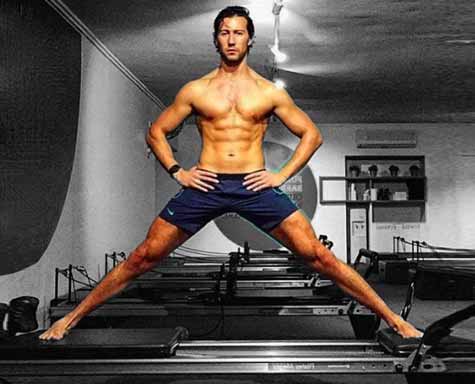
The chest muscles consist of the pectoralis major and pectoralis minor. The size difference between the two is self-explanatory.
Both work coordinately to stabilize the rib cage, spinal column, sternum, and shoulders. Most people suffering from the pectus excavatum deformity have weak chest musculature.
This causes structural problems in their body. Strengthening the pectoral muscles is essential if you have a sunken chest. If you don’t do that, you’ll have difficulties with the posture and stability of the spine. On top of that, your chest will look weird and deformed.
The pectoral muscles in women lie underneath the breast tissue. That is why they aren’t visible in comparison to men. Women with pectus excavatum will also benefit from strengthening the chest muscles for two reasons.
First, it will assist women in lifting their breasts. That will make their upper body more aesthetic and their sunken chest much less noticeable.
The second benefit is that it will assist the upper back, which will hold the weight of the breast tissue.
PILATES CAN CORRECT PROTRUDING RIBS
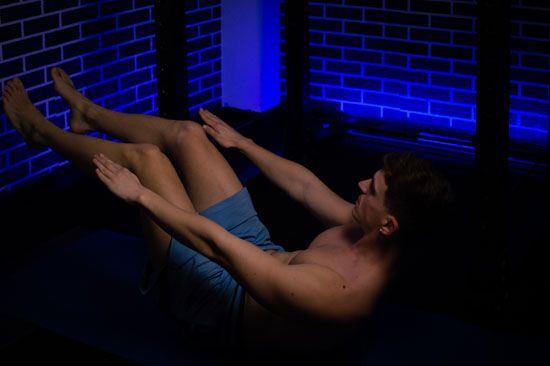
If you suffer from pectus excavatum, there is a high possibility that you have a flared rib cage. Typically, the left side of the ribs protrudes more.
This causes both functional and aesthetic problems. Speaking of aesthetics, I don’t consider flared ribs to be an attractive feature. Having a sunken chest with a combination of an abnormal ribcage isn’t very appealing.
Most sufferers are afraid to show their flawed bodies to members of the opposite sex. Luckily, Pilates is a convenient and pain-free way to improve flared ribs.

EXERCISE FROM HOME
You can do it from the comfort of your house. You no longer need to attend Pilates classes, thanks to YouTube.
Nowadays, I am doing Pilates right in front of my laptop. All I invested in was a simple yoga mat.
Strengthening the core muscles is the best way to correct the protruding ribs abnormality.
ALL-AROUND CORE BUILDER
By solid core, I don’t mean only tight abdominals. I also mean strong obliques and powerful lower back muscles. Pilates will significantly target obliques.
This is the muscle you need to develop to hide the flaring of your ribs. A balanced and robust core, which you’ll earn if you do Pilates regularly, will keep your posture upright and sturdy.
You can strengthen the core in many ways, but Pilates workouts are based on science. Each Pilates session will target the core muscles equally. There won’t be any muscular imbalances that you can get, like if you only perform crunches.
Every exercise in Pilates targets the core. You will engage your core musculature in a way your body hasn’t experienced before. The rib flaring will be gone after a couple of months of doing Pilates regularly.
CAN PILATES BUILD THE PECTORALIS MUSCULATURE?
Pilates isn’t designed just for attractive-looking women, as many people think. Masculine men with beards and chest hair are also welcomed to Pilates classes.
Men need to know this type of workout’s excellent muscle-building and muscle-toning benefits. There is a common misunderstanding that Pilates is only a series of stretches.
It generally focuses on the eccentric and concentric contractions of the muscles. The concentric contraction causes the muscle to shorten.
This is the phase where force is generated. Contrary, the eccentric contractions make the muscle elongate. This is due to the more prominent conflicting force.
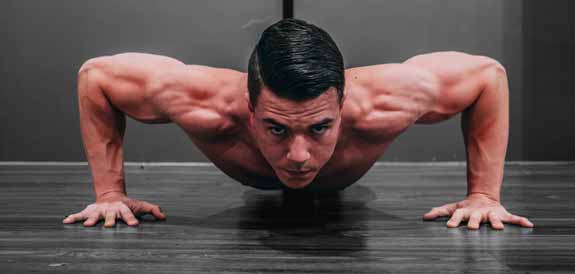
I COMBINED PILATES WITH WEIGHTLIFTING
When I combined bodybuilding exercises with yoga and Pilates, I saw an immense improvement in my concave chest deformity.
My inner pectoralis muscles were getting more defined. I added a significant amount of size to my overall chest musculature. The pain I felt in my chest, shoulders, and upper back, caused by pectus excavatum, has stopped.
Performing the bench press was no longer a struggle. I started to add weight to the bar almost every session. On top of that, I was progressing in Pilates.
I was performing advanced Pilates workouts, which were very difficult to do. I felt a significant burning sensation in my chest muscles after each workout.
Below, I’ll talk about the Pilates exercises that primarily focus on the chest muscles. Performing those exercises will lead to assistance in repairing the pectus excavatum condition without surgery.
THE 3 BEST PILATES EXERCISES FOR PECTUS EXCAVATUM
CLASSIC PILATES PLANKS
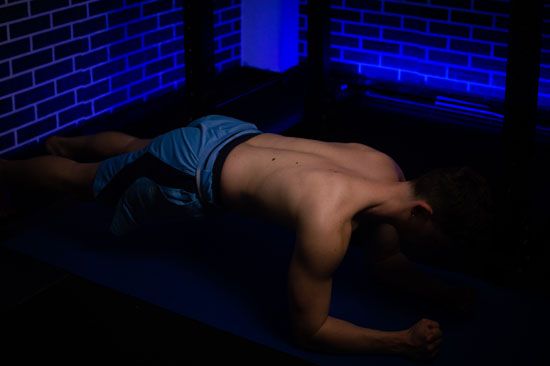
The basic Pilates plank is the most straightforward exercise to strengthen your chest and core muscles. Every single Pilates workout session will fit in the static plank.
When starting, you’ll hate this exercise. It will squeeze every single bit of muscle in your body. The burning sensation in the muscles is very beneficial.
It means your body is pushed to its limits and will become stronger after every workout session. After every Pilates session, you’ll notice that you can hold the static plank for longer.
After a few weeks, you will feel that the chest muscles will start to tone. The way you do the static beginner plank is straightforward.
- You start by spreading both hands wide, pressed to the floor.
- Roll the shoulder blades back and down and maintain a retracted scapula.
- Then, straighten both of your legs until you’re in a total-body plank position, just like in a push-up. The only difference is that you don’t push yourself down. You remain static.
If you’re starting, hold the static plank for around 15 seconds. Repeat it four times for a total of 60 seconds.
After each workout session, try to increase the hold by 5 seconds. Do this exercise thrice a week to improve the pectus excavatum and build the chest muscles.
PILATES PUSH-UPS

If you go to a Pilates classroom and ask the instructor about the best bodyweight chest movement, the answer will be push-ups.
Along with dips, it is the best bodyweight exercise that will target your chest. If you’re having trouble completing a regular push-up, I recommend doing it while positioned on your knees.
Do them this way until you gain strength in your upper body to perform a standard push-up.
The Pilates push-up is a little bit different than the regular push-up. It targets the chest musculature more. However, it is more challenging to perform.
Even a couple of repetitions will wake up your pectoralis muscles and force new tissue growth.
After doing this exercise for a couple of months, you’ll see fantastic mass gains in the pecs. Check out this video to see how to perform a picture-perfect Pilates push-up.
PUSH-UP PLANK
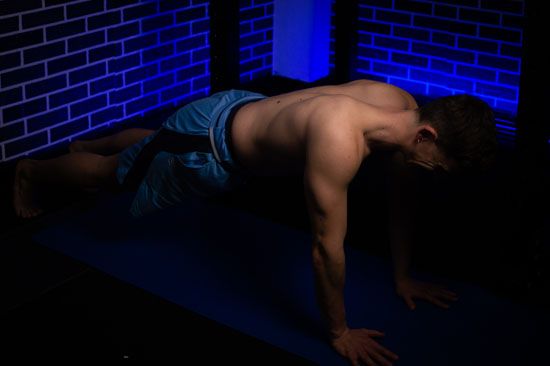
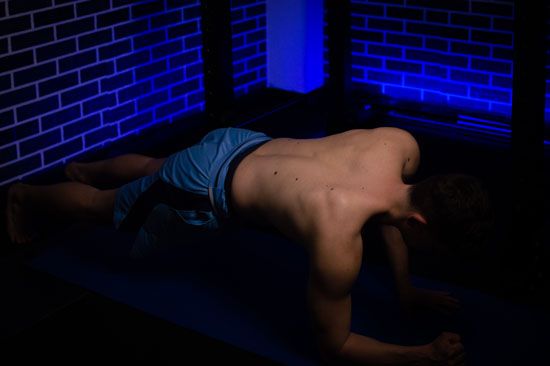

The push-up plank isn’t a regular Pilates exercise. However, I’ve seen some Pilates instructors integrate this exercise into their workouts for better chest muscle activation. This exercise challenges your core and stresses the chest, shoulders, and arms.
- To perform this exercise, start in a Classic Pilates Plank position. Keep the body sturdy and squeeze your glutes.
- Then, lower yourself down onto your right forearm.
- Next, bring down the left forearm. Now you should be in a forearm plank position.
- Stay in that position for one second. Then, with a tight core, place one of the hands on the ground. Use the other arm to push yourself back into a Classic Plank position.
- After that, repeat the whole sequence for as many repetitions as possible.
Try doing three sets of this exercise with about 120 seconds of rest between sets. This exercise will burn your chest and core musculature like no other.
It is a combination of the two best Pilates movements for the pecs.
CONCLUSION

Pilates can be a massive help in correcting the pectus excavatum deformity. However, to improve the deformity non-surgically, you shouldn’t rely only on Pilates.
Combine Pilates with wearing chest correcting braces, performing bodybuilding exercises, stretching, vacuum bell treatment for sunken chest, deep breathing exercises, and yoga.
This remarkable mixture will transform your entire body within a few months. If you’re suffering from pectus excavatum pain in the chest and back, Pilates is the perfect exercise system to follow.
All exercises in Pilates are designed to correct your posture and strengthen your entire musculature, especially your core.
For best results, I recommend you perform Pilates 3 times a week. Everything you need is an exercise mat. You don’t have to attend Pilates classes.
Do the workouts from the coziness of your house. Don’t hesitate. You already know what you should do.
8 Sources
- 10 Reasons You Should Start a Pilates Practice [Internet]. Verywell Fit. [cited
2022 Dec 3]. Available from: https://www.verywellfit.com/the-many-benefits-ofpilates-exercise-2704865 - Joseph Pilates. In: Wikipedia [Internet]. 2022 [cited 2022 Dec 3]. Available from:
https://en.wikipedia.org/w/index.php?title=Joseph_Pilates&oldid=1115019440 - U.S. Americans who trained pilates 2021 [Internet]. Statista. [cited 2022 Dec 3].
Available from: https://www.statista.com/statistics/191616/participants-in-pilates-training-in-the-us-since-2006/ - Best Pilates Reformers to Add to Your Home Gym [Internet]. Shape. [cited 2022
Dec 3]. Available from: https://www.shape.com/fitness/gear/equipment/athome-pilates-reformers - Miyamoto GC, Franco KFM, van Dongen JM, Franco YRDS, de Oliveira NTB, Amaral DDV, et al. Different doses of Pilates-based exercise therapy for chronic low
back pain: a randomised controlled trial with economic evaluation. Br J Sports
Med. 2018 Jul;52(13):859–68. - The World’s Top Athletes Who Do Pilates - Dynamic Pilates [Internet]. [cited
2022 Dec 3]. Available from: https://www.dynamicpilates.com.au/the-worldstop-athletes-who-do-pilates/ - Pilates: how does it work and who needs it? - PMC [Internet]. [cited 2022 Dec 3].
Available from: https://www.ncbi.nlm.nih.gov/pmc/articles/PMC3666467/ - Why Pilates Is Not an Exercise Only Suited for Women [Internet]. Verywell Fit.
[cited 2022 Dec 3]. Available from: https://www.verywellfit.com/pilates-for-men2704623


